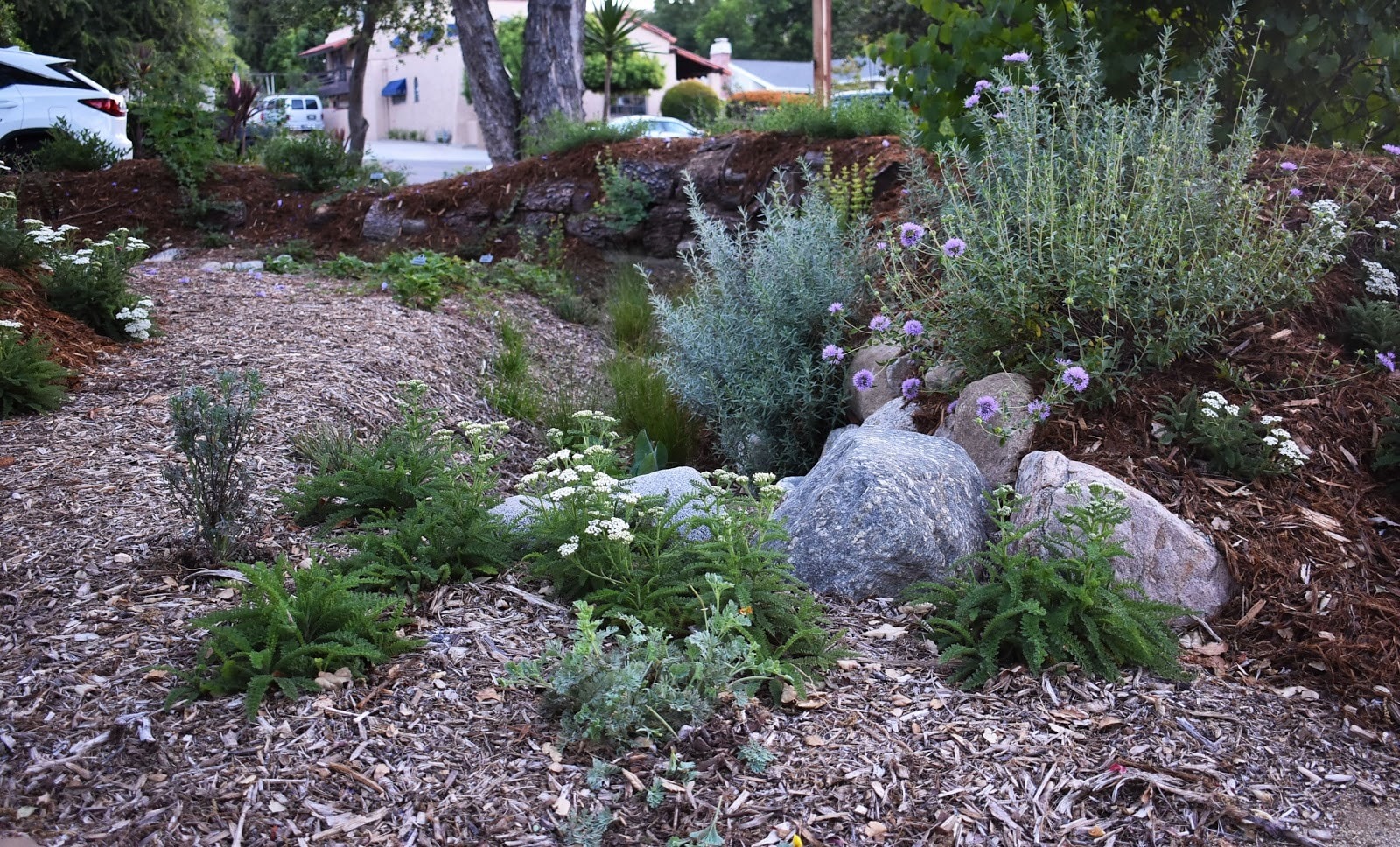Interdependence is the Way Through
by Leigh Adams
Interdependence is when multiple organisms link together to create a mutually supportive alliance. The more they work together, the greater the dependence becomes. Regenerative systems are built upon this concept of beneficial relationships. The animate and inanimate partners support, renew and reiterate the benefits they share. Sounds good to you? It does to us as well.
At Studio Petrichor, we work to establish, renew and refresh natural systems. We look to capture moisture and optimize its use, enlivening the surroundings for all forms of life and its inhabitants. A flourishing habitat creates abundance and healthy interactions confer those advantages upon other living systems in an action we like to call “collateral advantage”.
In the situation below, a preschool tarmac (blacktop) fenced area, in what is essentially a protected area of the school’s parking lot, we built Hugels and planted them with child friendly plants. As spring rains drenched the Hugels, the humic acid that leached from the wooded mounds drained into the old and sparse camelia bush. You see it in its regenerated form after the outstandingly glorious bloom has passed, leaving only the luxuriant return of glossy leaves. While we would ideally do this Hugelkultur on soil, we can also work in more challenging situations with the same goal: Interdependence. We think the children, birds, lizards, plants and other organisms that inhabit this “Hugel on pavement” space could speak to their joy in sharing that abundance.

 Photo by Studio Petrichor – Hugelkultur berm on asphalt at Pasadena Waldorf School
Photo by Studio Petrichor – Hugelkultur berm on asphalt at Pasadena Waldorf School
Creating reciprocal alliances is Studio Petrichor’s tribute to interdependence. We design for our clients, enhancing their use of space and resources while also returning nutrients, moisture and carbon to the soil. How is a Hugel interdependent? We take waste materials and construct and activate a living system. The morphology (form) of the Hugel harvests water and builds soil. It supports many subterranean life forms (fungi, bacteria and insects) and at the same time, creates soil, nutrient rich soil. While you may need to water a bit, water needs are greatly reduced by the interdependent practice of Hugelkultur.
To achieve even greater interdependence and enhanced water capture, Studio Petrichor partners Hugelkultur with bio-swales as in this demonstration below:
 Photo by Studio Petrichor – Hugelkultur berm and bioswale infiltration in La Canada/Flintridge
Photo by Studio Petrichor – Hugelkultur berm and bioswale infiltration in La Canada/Flintridge
In this instance, the bio-activity of the Hugel is enhanced by the water harvesting ability of the swale. As the mycorrhizal fungi spread through the logs and mulch of the swale and the Hugel, each is able to move more water laterally and infiltrate more water vertically, a mutually beneficial reciprocity. You’ll also notice the plant life thriving in these young but mutualistic systems.
 Photo by Studio Petrichor – Leigh Adams, The Swale Rider in a bioswale, next to Hugelkultur berm at our home/office garden in Altadena, CA
Photo by Studio Petrichor – Leigh Adams, The Swale Rider in a bioswale, next to Hugelkultur berm at our home/office garden in Altadena, CA
Studio Petrichor seeks to use as many regenerative techniques as possible in each of our endeavors. Join us in our quest to create havens of diversity throughout our community.
Leigh Adams is a consultant, educator, eco-sensitive designer and horticultural interpreter at the LA County Arboretum, Studio Petrichor and Metabolic Studio. She has trained many county agencies in regenerative practices as well as conducting hands-on workshops with local schools and professional groups. Her love of collaboration and education infuse all aspects of her work, leaving participants with a profound sense of empowered accomplishments.

